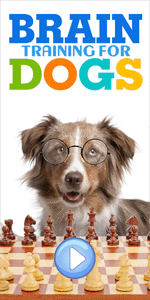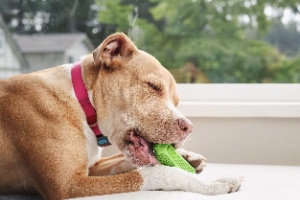
Why do dogs like chewing? They enjoy it because it relieves stress, cleans their teeth, and satisfies natural instincts.
More...
Have you ever wondered why your dog loves chewing on everything from toys to furniture?
This seemingly simple behavior is rooted in stress relief, dental health, and instinctual satisfaction.
Understanding this common canine habit allows you to meet your pet's needs and reduce undesirable chewing more effectively.
In this article, we will delve into the fascinating world of dog behavior to explore the question: Why do dogs like chewing?
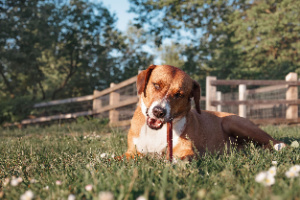
Why Do Dogs Like Chewing? Uncovering Canine Behavior
Chewing is a fundamental part of a dog's life. It helps them explore their world, relieve stress, and maintain dental health.
To begin with, dogs have an instinct to chew. This behavior starts when they are puppies and continues into adulthood.
In fact, chewing helps them explore their surroundings, relieve boredom, and clean their teeth.
Puppies often chew to soothe the discomfort of teething. As they age, chewing becomes a way to exercise their jaws and maintain dental health.
Interestingly, chewing provides mental stimulation for dogs. It can reduce anxiety and stress, especially when they are left alone for extended periods.
Therefore, providing appropriate chew toys can prevent destructive chewing on household items.
Choosing safe and durable toys that accommodate your dog's size and chewing habits is crucial.
By grasping the reasons behind dogs' chewing habits, you can more effectively cater to their needs and maintain a joyful, healthy companion.
Header | Why Do Dogs Like Chewing? Tips 1-10 to Address and Prevent Chewing Issues |
|---|---|
1 | Provide safe chew objects to help puppies alleviate teething pain. |
2 | Puppy-proof your home to keep inappropriate items out of reach. |
3 | Offer a variety of chew toys to satisfy a dog's natural instincts. |
4 | Use brain games to stimulate your dog's mind and reduce boredom. |
5 | Regularly exercise your dog to burn off excess energy. |
6 | Engage in interactive play sessions with your dog daily. |
7 | Offer bully sticks as a safe chewing alternative. |
8 | Incorporate dental treats to promote oral hygiene while satisfying chewing urges. |
9 | Rotate toys regularly to maintain your dog's interest. |
10 | Supervise your dog during playtime to ensure safety. |
Reasons Why Dogs Chew
Puppy chewing is often related to teething. As puppies experience discomfort while their new teeth emerge, they tend to chew on various objects for relief.
To address this, providing safe chew objects for dogs can help alleviate their pain.
Moreover, puppy-proofing your home ensures that inappropriate items are out of reach.
When it comes to teething in puppies, they chew to soothe the discomfort associated with this process.
In exploring their surroundings, dogs employ their mouths to examine unfamiliar items.
Lastly, chewing satisfies instincts and can also be a form of play.
Header | Why Do Dogs Like Chewing? Tips 11-20 |
|---|---|
11 | Provide puzzle toys that challenge your dog's problem-solving skills. |
12 | Teach commands like "leave it" or "drop it" to prevent inappropriate chewing. |
13 | Reward good chewing behavior with treats and praise. |
14 | Redirect your dog's attention to appropriate items if they start chewing something undesirable. |
15 | Create designated play areas where your dog can chew without causing damage. |
16 | Use baby gates or playpens to limit access to certain parts of your home. |
17 | Gradually introduce new toys by showing enthusiasm and playing alongside your dog. |
18 | Monitor the type of treats given to ensure they are safe for consumption. |
19 | Provide comfortable bedding, toys, and clothing that smells like you in their safe space. |
20 | Consult a veterinarian if excessive chewing persists despite efforts to curb it. |
Signs of Excessive Chewing
If your dog frequently destroys household items, it might be chewing excessively.
On a similar note, constant gnawing on furniture is another indicator of this behavior.
Common Triggers for Excessive Chewing
While chewing is normal, excessive chewing can signal underlying issues.
On another note, chewing can be a self-soothing mechanism for dogs experiencing anxiety or stress.
For instance, separation anxiety in dogs often leads to excessive chewing to cope with being alone.
To address this issue, offering chew toys and treats can provide comfort and prevent dog chewing and biting problems.
Moreover, anxiety or stress often causes dogs to chew more as a coping mechanism.
In contrast, monotony and insufficient mental engagement can lead a dog to use chewing as a form of self-entertainment when bored.
As a result, without sufficient mental and physical exercise, dogs may resort to destructive chewing out of sheer boredom.
Therefore, incorporating toys and bully sticks into their routine can entertain them and reduce undesirable chewing habits.
Header | Why Do Dogs Like Chewing? Tips 21-30 |
|---|---|
21 | Seek advice from a certified behavioral specialist for personalized solutions. |
22 | Invest in durable toys for heavy chewers made from resilient materials like rubber or nylon. |
23 | To prevent dogs from gnawing on furniture or household objects, apply specially formulated anti-chew sprays with an unpleasant taste. |
24 | Secure electrical cords and remove small objects that dogs might swallow as part of dog-proofing measures. |
25 | Offer cold chew toys for teething pain relief in puppies and adult dogs. |
26 | Recognize signs of stress and frustration in dogs early on to address them effectively. |
27 | Engage in activities that offer your pet mental stimulation and physical exertion. |
28 | Identify the root cause of anxiety or stress leading to destructive chewing behaviors. |
29 | Ensure regular walks, playtime, and interactive games as part of their routine physical exercise regimen. |
30 | Understand that some dogs are naturally tough chewers and choose appropriate products accordingly. |
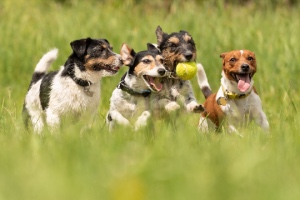
Physical Exercise for Dogs
Physical exercise is crucial in preventing excessive chewing due to pent-up energy.
To begin with, regular walks, playtime, and engaging activities help keep your dog physically fit and mentally stimulated.
Equally important, physical exercise for dogs is essential for maintaining their health and well-being.
For instance, regular activity helps to keep their muscles strong, joints flexible, and weight under control.
As a result, dogs burn off excess energy and stimulate their minds when they engage in physical activities. This mental stimulation can prevent behavioral issues that often arise from boredom.
Henceforth, it is crucial to incorporate physical exercise for dogs into their daily routine.
Medical Reasons for Dog Chewing
Dental issues can cause discomfort, leading dogs to chew more as a coping mechanism.
Occasionally, dogs chew on non-food items because they are hungry or desire food.
Besides that, lacking essential nutrients might prompt dogs to chew on these items to obtain the missing elements.
Providing chew treats can satisfy their urge while also offering nutritional benefits.
Monitoring the type of treats given is essential to ensure they are safe for your dog's consumption.
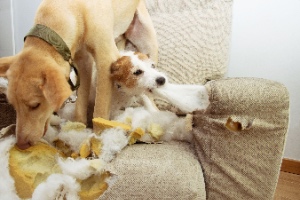
Behavioral Reasons for Dog Chewing
Dogs often exhibit attention-seeking behavior, such as chewing on furniture or shoes, because they have learned that these actions prompt a reaction from their owners, even if it's negative.
Practical Solutions for Redirecting Dog Chewing Behavior
First and foremost, offering suitable alternatives and addressing underlying issues are vital strategies.
You can positively redirect your dog's chewing behavior by introducing appropriate, safe, and suitable chew toys.
Dental Treats
Dental treats promote dental health while satisfying the urge to chew.
It aids in maintaining oral hygiene by cleansing teeth and gums, thereby minimizing plaque accumulation.
Similarly, good chewing practices contribute to overall teeth and jaw health, so dog owners must encourage proper chewing behavior.

How to Introduce New Toys
Introduce new toys gradually. Show enthusiasm and play with the toys alongside your dog to pique their interest.
By understanding why dogs like chewing and providing proper solutions, you can ensure your furry friend remains happy and your belongings stay intact.
Training Techniques to Curb Excessive Chewing
Header | Why Do Dogs Like Chewing? Tips 31-40 |
|---|---|
31 | Encourage healthy chewing habits by providing a variety of textures in chew toys available at home. |
32 | Use positive reinforcement methods consistently when training commands, specifically curbing excessive chews. |
33 | Incorporate both indoor & outdoor exercises into daily routines, ensuring balanced mental & physical stimulation. |
34 | Gradually desensitize pets experiencing separation anxiety, starting from short durations alone and extending over time. |
35 | Provide adequate nutrition, addressing any deficiencies potentially prompting non-food item chews. |
36 | Regularly check dental health, ensuring no underlying issues causing discomfort leading towards increased chews. |
37 | Engage professional trainers offering proven techniques tailored individually to addressing specific behavioral concerns. |
38 | Maintain consistency across all family members, enforcing rules regarding acceptable/unacceptable chew behaviors. |
39 | Introduce new environments cautiously observing reactions and adapting strategies minimizing potential stress-induced chews. |
40 | Encourage socialization opportunities, reducing isolation-related anxieties contributing towards destructive behaviors. |

Positive Reinforcement Methods
Rewarding good behavior is crucial in training your dog. For instance, when your dog chews on appropriate items, reward it with treats or praise.
By doing so, rewarding the dog this way motivates it to continue exhibiting the preferred conduct.
Another effective method is to redirect your dog's attention to appropriate items.
Specifically, if your dog starts chewing on something, it shouldn't calmly redirect it to a chew toy.
Consistency is critical here; over time, your dog will learn what is acceptable to chew.
Using Commands Effectively
Training and prevention are vital in managing dog chewing behavior.
To begin with, training directives such as 'leave it' or 'drop it' can help prevent pets from chewing on household items inappropriately.
Consistent training helps reinforce good habits while discouraging destructive ones.
Initially, start by training these commands in a distraction-free environment.
As time passes, gradually introduce interruptions as your dog becomes more skilled.
Lastly, use treats and praise to reinforce the commands.
Manage Your Dog’s Environment
Header | Why Do Dogs Like Chewing? Tips 41-50 |
|---|---|
41 | Utilize calming aids (e.g., pheromone diffusers) supporting pets prone to heightened anxiety. |
42 | Establish regular feeding times to prevent your pet from chewing on non-food items out of hunger during the day and night. |
43 | Create enriching environments incorporating varied sensory experiences, keeping minds engaged and preventing boredom-induced actions. |
44 | Provide ample opportunities to explore outdoors under supervision. |
45 | Ensure sufficient hydration levels, avoiding dehydration-related irritabilities potentially escalating unwanted actions. |
46 | Regularly groom pets, checking skin conditions and allergies causing discomfort and indirectly influencing behavioral patterns. |
47 | Continuously educate yourself by staying updated on the latest research findings, enhancing your understanding of managing canine behaviors effectively. |
48 | Join community groups/forums, share experiences, gain insights about others facing similar challenges, foster supportive networks, and collectively address concerns. |
49 | Celebrate small victories, acknowledging the progress made, reinforcing positive changes, and boosting the confidence of both owner and pet alike. |
50 | Remain patient throughout the journey, recognizing each pet is unique, requiring individualized approaches, ultimately fostering harmonious living environments. |
Dog-Proofing Your Home
Removing temptations from your dog's reach can prevent unwanted chewing.
To begin with, keep shoes, remote controls, and other tempting items out of their reach.
By taking this straightforward action, you can spare yourself a significant amount of hassle.
Equally important, creating safe spaces for your furry friend is essential. Designate areas where they can play and chew without causing damage.
To achieve this, use baby gates or playpens to limit access to certain areas of your home.
Dealing with Separation Anxiety
Dogs with separation anxiety may chew excessively to deal with their feelings when left alone.
As a result, separation anxiety can lead to destructive chewing when your dog is unattended.
Gradual desensitization techniques can help alleviate this problem.
Begin by briefly leaving your dog alone and slowly extending the time apart.
In another approach, creating a safe space for your dog alone can also help reduce anxiety.
For instance, provide comfortable bedding, toys, and perhaps clothing that smells like you.
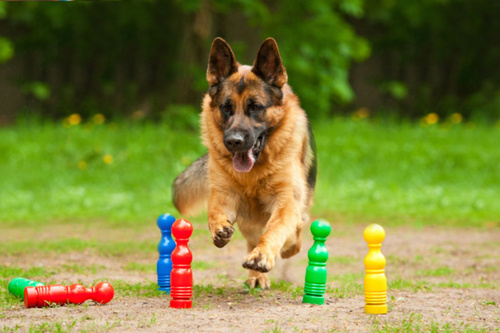
Ensuring Adequate Exercise and Mental Stimulation
Dogs are natural chewers. Chewing is an instinctive behavior that dates back to their wild ancestors.
Historically, chewing helped dogs keep their teeth clean and jaw muscles strong in the wild. Even today, this instinct persists in domestic dogs.
For instance, regular walks and playtime are essential for stimulating your dog physically and mentally.
As a result, a well-exercised dog is less prone to chew on things destructively.
On top of that, interactive puzzles and captivating games provide stimulating mental challenges that entertain your dog.
In particular, these toys challenge their problem-solving skills and satisfy their natural instincts.
When to Consult a Veterinarian
If excessive chewing persists despite your efforts, consult a veterinarian.
At this point, they can help determine whether any underlying medical conditions are causing this behavior.
Should your dog's chewing habits remain troublesome even after trying these strategies, seek advice from a veterinarian.
A vet can rule out underlying medical issues, such as dental problems or other health concerns, that might be causing the behavior.
Behavioral Specialists and Trainers
A certified behavioral specialist or professional trainer can provide customized guidance for your dog's requirements.
For instance, they use proven techniques to address specific behavioral issues effectively.
Moreover, consistently applying these strategies can foster a stronger bond with your pet.
This approach also promotes a harmonious home environment.
Anti-chew Sprays
Anti-chew sprays deter dogs from chewing on furniture or other household items.
Specifically, these sprays have a bitter taste that discourages chewing, yet they remain safe for pets.
Consequently, pet owners can enjoy peace of mind knowing they protect their belongings without compromising their furry friends' well-being.
Top-Rated Durable Toys
Investing in durable toys designed for heavy chewers can save you money in the long run.
Seek out toys crafted from sturdy materials such as rubber or nylon that can endure intense chewing.
Additionally, regularly inspect the toys for wear and replace them to ensure your pet's safety and enjoyment.
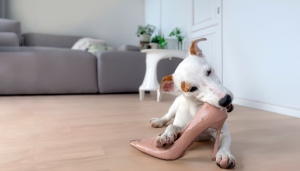
In the Final Analysis
Why do dogs like chewing? This question can help manage this behavior effectively and lead to a deeper understanding of their natural instincts and needs.
Understanding why dogs engage in excessive chewing and implementing effective strategies are essential to managing it.
You can ensure a well-behaved dog that enjoys appropriate chewing activities by using positive reinforcement, proper training, and environmental management.
When pet owners understand this behavior, they can promote healthy habits by providing chew toys and regular exercise.
To address this issue further, they should also consider underlying anxiety or boredom.
Equally important, securing your home against dog-related incidents is crucial for safety.
For example, safeguarding electrical cords and eliminating small objects can avert hazards.
Addressing dog-proofing keeps your home secure and mitigates normal chewing behavior that might lead to potential dangers.
On another note, dental pain can result in destructive behaviors like fabric sucking.
Therefore, providing teething pain relief solutions, like cold chew toys, alleviates discomfort.
Furthermore, offering safe toys for tough chewers ensures appropriate outlets for their instincts.
Regular physical exercise prevents behavioral issues by offering mental stimulation and reducing stress.
Early recognition of signs of stress and frustration in dogs helps mitigate these behaviors effectively.
Finally, durable toys for strong chewers provide long-lasting entertainment and create a safer environment for you and your canine companion.



